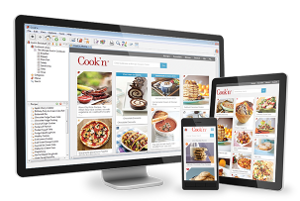
Freestone vs. Clingstone? These peachy terms refer to how well the peach pit clings to the peach. Freestone peaches make the best snacks right from the store as their pit can be easily pulled from the fleshy peach. A clingstone peach pit, however, does just what its name says-it clings! Many clingstone peaches are used to make canned peaches. You really must dig to get out a clingstone's pit.
Don't like to eat fuzzy peaches? Neither do most Americans. So, after harvest, many peaches are mechanically brushed to remove the peach fuzz.
Choosing Peaches
If you want to eat the peach right away, make sure it is ripe by smelling it. Ripe peaches carry a delicious aroma. Hold the peach and press it. If it's soft, it's ripe. Avoid peaches that have shriveled skins or brown spots.
If you want to use the peach a few days later, choose ones that still need to ripen. Peaches are often picked before they are ripe these are the hard peaches at the store. In choosing unripe peaches, pick fresh-looking ones with a yellow or creamy background color. These should have a mild fragrance that will get stronger and more delicious as the peach ripens. Once at home, just set the unripe peaches in a bowl at room temperature. They will ripen in two to three days. If you want them to ripen faster, place them in a brown paper bag and roll the bag shut. Again, keep the bag out at room temperature.
This Peaches recipe is from the Food Facts and History Cookbook. Download this Cookbook today.